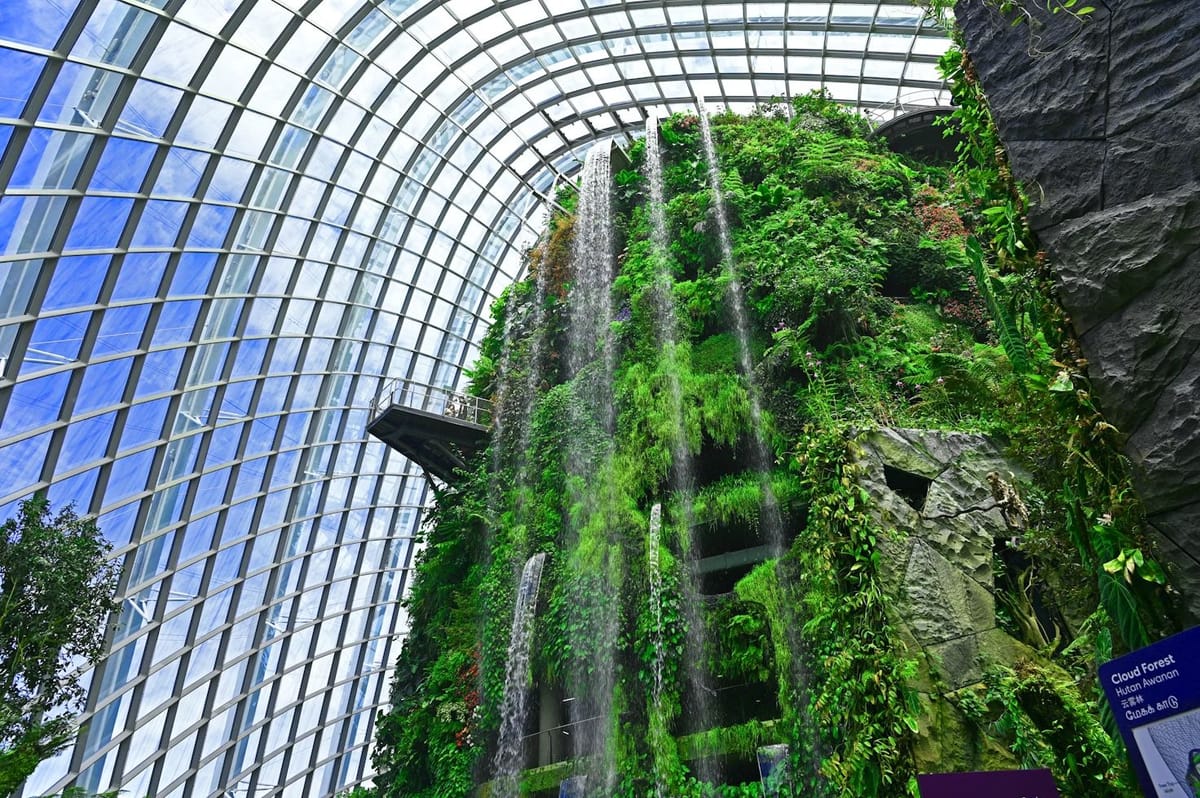What's next for data centres in Singapore
Can the regional data centre hub succeed with its new strategy?

In a dramatic shift, Singapore is opening the doors to data centres again. This will start with an initial tranche of 300MW of capacity allocated "in the near term" with another 200MW for operators using green energy for a total of 500MW.
There is no question that the new capacity will alleviate the demand for data centres in the city-state. But at a time when new data centre developments can go up to 150MW per facility, and neighbours such as Johor are sporting 1,600MW of total supply, how can a mere 500MW of additional capacity move the needle?
In this second part of a two-part series, I share my thoughts on what's next for data centres in Singapore. You can read the first part "Dissecting Singapore's 300MW allotment for data centres" here.
The Green Data Centre Roadmap
To better understand IMDA's revised thinking about data centres in Singapore, I spent time re-reading the Green Data Centre Roadmap (pdf).
First, the paper was exceptionally well-written. There is some evidence of time pressure resulting in some repetition. However, it was clearly put together by a team intimately familiar with the nuts and bolts of data centres and cognisant of where modern facilities are heading.
The roadmap confirms that Singapore is attempting to solve multiple intractable problems inherent to data centres – all at the same time. It also outlines a strategy for spurring the data centre industry to increase energy efficiency by innovating and utilising more green energy.
But how can that work given the disparate strategies, business models, and customer mix of differing data centre operators? To overcome this elephant in the room, the roadmap broadens its approach to the lowest common denominator through an ecosystem approach where all stakeholders within the data centre industry have a role.
A virtuous cycle for data centre efficiency
The premise here is straightforward: To achieve energy efficiency in Singapore data centres over the next 10 years. This cannot happen through regulation alone but by leveraging a skilful combination of policies, accreditation programmes, and incentive schemes spanning multiple government agencies.
There are two key prongs here:
- Accelerating data centre efficiency at the hardware and software level to maximise energy efficiency (and capacity).
- Accelerating the use of green energy and to deploy it at scale to maximise opportunities for continued growth.
It is crucial to view the roadmap through the right lens. As I wrote earlier this week, it is about capturing strategic opportunities and sending a strong message to the industry after years of being slow with releasing data centre capacity. It is also not about positioning Singapore as a global AI training hub - an endeavour that would pit Singapore against technology giants pouring untold billions into GPUs alone.
What it attempts to do is to create what I'll call a virtuous cycle of data centre efficiency by moving beyond tired - and limited - approaches such as the use of NEWater and installing some solar panels on the rooftops of data centres. Instead, it seeks a reinvigorated approach by building an ecosystem biased towards incorporating efficiency across the entire digital stack.
By raising the bar one notch at a time, the roadmap aims to spur innovation and lower costs, ingratiate a strong awareness of resource use with end-users, and reshape how new data centres are designed and built.
Older data centres, watch out
The Green Data Centre Roadmap is not just about new data centres. Apart from novel examples such as the cutting-edge immersion cooling technology from Sustainable Metal Cloud (SMC) and the use of a Digital Twin by Red Dot Analytics (RDA), it is telling that many of the other examples cited entail the retrofitting or upgrading of existing data centres.
As Singapore keeps pushing the boundaries of data centre energy efficiency, expect more initiatives designed to uplift existing data centres to come about. Indeed, the roadmap signals that the government will support data centre operators to work with ecosystem players. This might happen through improving facility-level efficiency or aggregating smaller data centres into larger, more efficient facilities.
In my communications with IMDA, I understand that existing data centres can potentially apply to expand their capacity as part of a retrofit, as long as they meet allocation criteria. This would certainly be interesting to data centres such as BDx's SIN1 data centre at OneTen Paya Lebar which it recently acquired.
For now, expect existing data centre-centric schemes to be updated over time. The Green Mark for Data Centre scheme, for instance, is slated for an update by the end of 2024. Ultimately, the goal is for all data centres in Singapore to achieve a PUE matching or exceeding 1.3 at 100% IT load over the next decade. And yes, it's not just energy efficiency but includes water efficiency as measured by water usage effectiveness (WUE).
What can we expect
What can we expect for the data centre landscape in Singapore? Two thoughts come to mind.
For one, it is evident that the days of static 3-year or 5-year roadmaps are over. Like the National AI Strategy 2.0 (NAIS 2.0), the Green Data Centre Roadmap is billed as a living document with a clear emphasis on industry collaboration.
While this is good, a potential downside of an overtly consultative approach could be indecisiveness. Every industry stakeholder coming to the table will harbour a strong vested interest in his or her respective organisation. It will take very strong leaders with deep industry knowledge to separate the wheat from the chaff, and to advance the roadmap with purpose and clarity.
In addition, the roadmap currently offers carrots aplenty, highlighting various incentives for data centre operators and even some designed to help enterprise end-users to refresh to energy-efficient IT equipment.
Incentives, including the possibility of new data centre capacity, generally work well. But there will come a point in time when laggards must be coerced into action through regulatory measures and penalties. I wonder when the tipping point will be reached and the kind of regulatory "stick" that will be wielded to move the industry forward.
Can Singapore successfully redraw the boundaries of what's possible with data centres, and do what others say cannot be done? As with many things in life, success will hinge heavily on the execution.
Note: The other major component is the use of green energy for data centres. This is a huge topic by itself. If there's interest, I'll cover that in a third instalment later this year.
